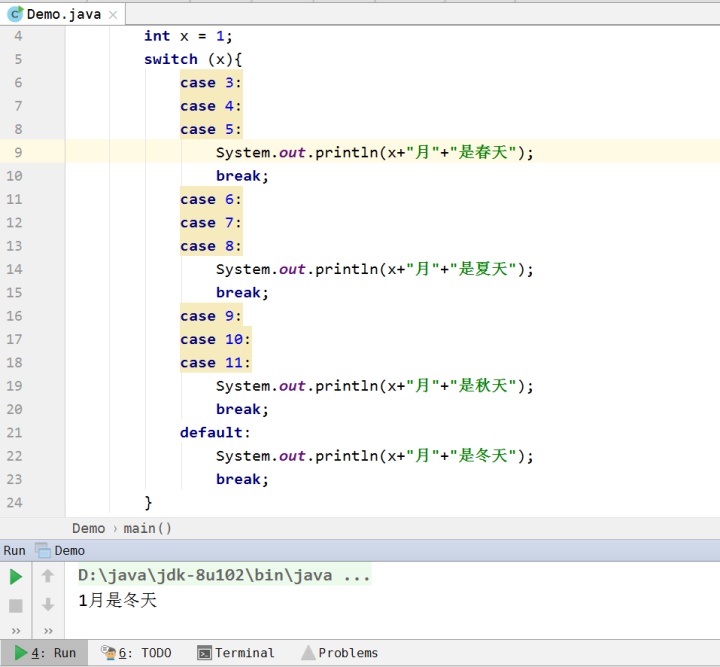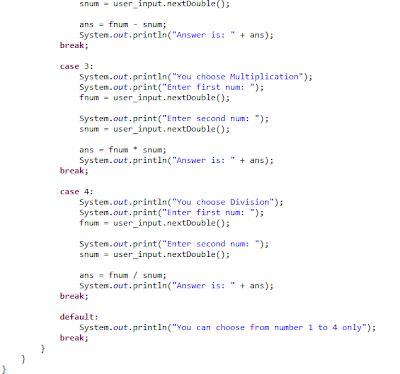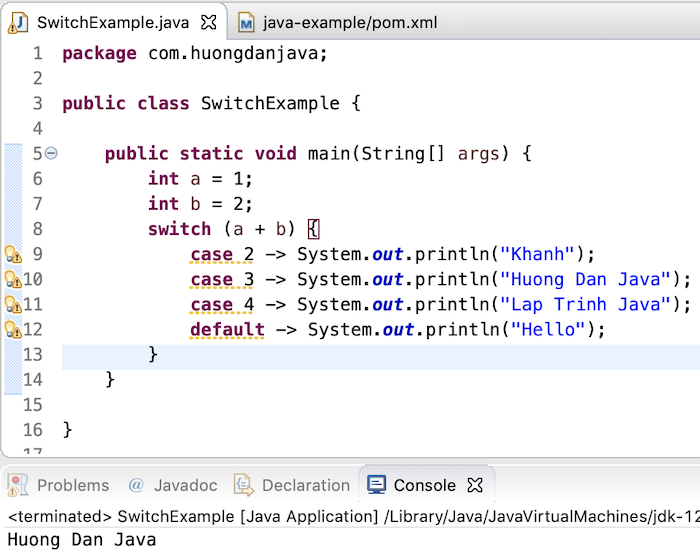
The switch statement was introduced to us precisely to avoid this whenever possible. This needs to changed to return the result after it breaks from the case and should return result according to the case it picks. This can quickly become cumbersome and unreadable. In that case, TestNG guarantees that the Before.

If we wish to compare a value to multiple values and execute code based on their equality, we could do something along the lines of: String input = "someCommand" A TestNG test can be configured by BeforeXXX and AfterXXX annotations which allows to perform some Java. With it, case distinctions can be formulated much more elegantly than before. Let's look at the newer, slightly modified syntax for switch, called Switch Expressions. The old syntax dates back to the early day of Java, and its handling is a bit cumbersome. In Java, there are several ways to control the flow of the code: In this blog, I will cover some improvements of switch.

Switch case java rerun software#
Loops were a concept used long before computer programming was even a thing, but the first person to use a software loop was Ada Lovelace, commonly known by her maiden name - Byron, while calculating Bernoulli numbers, back in the 19th century. The default clause of a switch statement will be jumped to if no case matches the expressions value. low-level programming languages usually achieve that affect with a lot of go-to commands. The switch statement evaluates an expression, matching the expressions value against a series of case clauses, and executes statements after the first case clause with a matching value, until a break statement is encountered. Every programming language supports some form of flow control, if not explicitly via ifs and fors or similar statements - then it implicitly gives us the tools to create such constructs, i.e.

That's what "flow control" means - guiding the execution of our program, instead of letting it execute line-by-line regardless of any internal or external factors. There aren't many things we could do with code that can only execute line-by-line. Conditional statements and loops are a very important tool in programming.


 0 kommentar(er)
0 kommentar(er)
